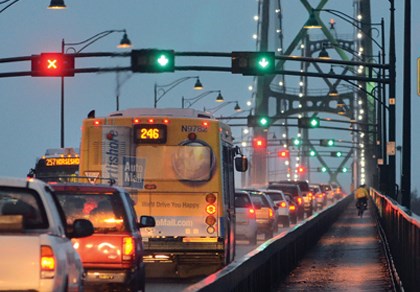It was 79 years ago this week that Lions Gate Bridge officially opened to traffic. The cost of building the bridge was underwritten by the Guinness family as a means to ensure the success of their housing development plans, the British Pacific Properties. We’ve been arguing about the impacts development has on traffic ever since. Currently, the District of North Vancouver is debating whether to proceed with the Maplewood neighbourhood plan, which could bring another 1,500 units of housing and 4,500 employees to the lands east of the Seymour River.
We can foresee already that the debate will be centred around whether these new homes will exacerbate traffic by adding new cars to road, or alleviate traffic by allowing more people who commute to the North Shore the chance to find a place to live here. Without meaningful data, it’s hard to know.
We’re coming up to the end of a year of fresh data releases from the 2016 census. Here’s a bit of what we do know so far: The North Shore’s population has grown at about half the rate of the Metro Vancouver average. The fastest growing communities are in the Fraser Valley. And almost half of people renting on the North Shore today are paying more than they can afford.
Later this month, Statistics Canada will release data on labour and the commuting habits of Canadians. This will be the single biggest piece of the puzzle in helping us definitively answer whether it’s “us” or “them” who are to blame for the traffic.
But casting blame misses the point and it achieves nothing if it doesn’t come with meaningful action. That means affordable housing, not just more housing. And it means viable transportation alternatives to the single-occupancy vehicle.
What are your thoughts? Send us a letter via email by clicking here or post a comment below.



